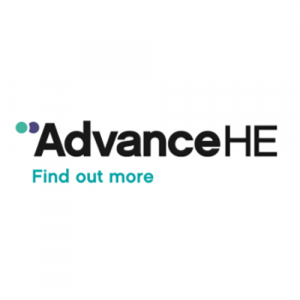 AdvanceHE (formerly the HEA) fellowship scheme formally recognises teaching and learning excellence. Based in the UK, fellowships are internationally recognised with close to 100,000 fellows globally. Closer to home, the fellowship scheme is gaining traction in Australasia with several institutions formalising fellowship arrangements including the University of Queensland, ANU, Massey University, and AUT. HEA offers Associate Fellow, Fellow, Senior Fellow and Principal Fellow and all levels differ depending on experience and impact in teaching and learning.
AdvanceHE (formerly the HEA) fellowship scheme formally recognises teaching and learning excellence. Based in the UK, fellowships are internationally recognised with close to 100,000 fellows globally. Closer to home, the fellowship scheme is gaining traction in Australasia with several institutions formalising fellowship arrangements including the University of Queensland, ANU, Massey University, and AUT. HEA offers Associate Fellow, Fellow, Senior Fellow and Principal Fellow and all levels differ depending on experience and impact in teaching and learning.
There are many benefits of the AdvanceHE fellowship scheme and at an ILT workshop held on 21 March 2018, I shared tips for applying for HEA fellowship along with AP Lesley Gardner, Dr Rhiannon Lloyd and Ruth Dimes who had all gone through the fellowship process.
- Familiarise yourself with the UK Professional Standards Framework (UKPSF)
You will need to demonstrate practice against the UKPSF so make sure you’re familiar with this. Lesley’s earlier drafts did not address the UKPSF specifically and understanding the UKPSF in detail would have saved time. Additionally, make sure you’re familiar with application documents and templates of the relevant fellowship level.
- Collect and organise your evidence
Although the fellowship doesn’t require you to provide supporting evidence, having evidence at hand will make your application a lot smoother. As I had to write two case studies for Senior Fellowship, my evidence was in multiple places and a large proportion of time was spent collating and organising my evidence. Actively collect and organise your evidence as everyday practice to make it easier when it comes to writing your application.
- Reflect only on teaching experience delivered within a tertiary education environment
As Ruth learned, HEA will only consider teaching at level 5 and above of the NZQA framework, and only when delivered within a tertiary education setting. If you are a PTF from industry, even if you have taught at a level 5 or higher (for professional qualifications for example), this will not be accepted as HEA evidence, as it has not been delivered within a tertiary institution. That said, practice-informed teaching and evidence of industry engagement in curriculum design, development, and delivery will be beneficial for your application.
- Include collaborative experiences
Given the reflective nature of the application process, Rhiannon pointed out that it was easy to fall into an ‘I’ mentality – I did this, I did that, I, I, I… Note that HEA assessors will also look for evidence of collaboration with others. In Rhianon’s case, she drew on her collaborations with a Learning Designer. When collaborations are included, applicants tend to define the role of the person, rather than name them specifically. However, if your collaborator is known in their field, do name them personally.
- Find good peer-reviewers
Find peer-reviewers who will give you helpful and constructive feedback. Sometimes it is easy to under or overestimate achievements and peer-reviewers can help you give an honest account of your practice.
Rhiannon has created a helpful Canvas course to help applicants get thinking about their applications.

